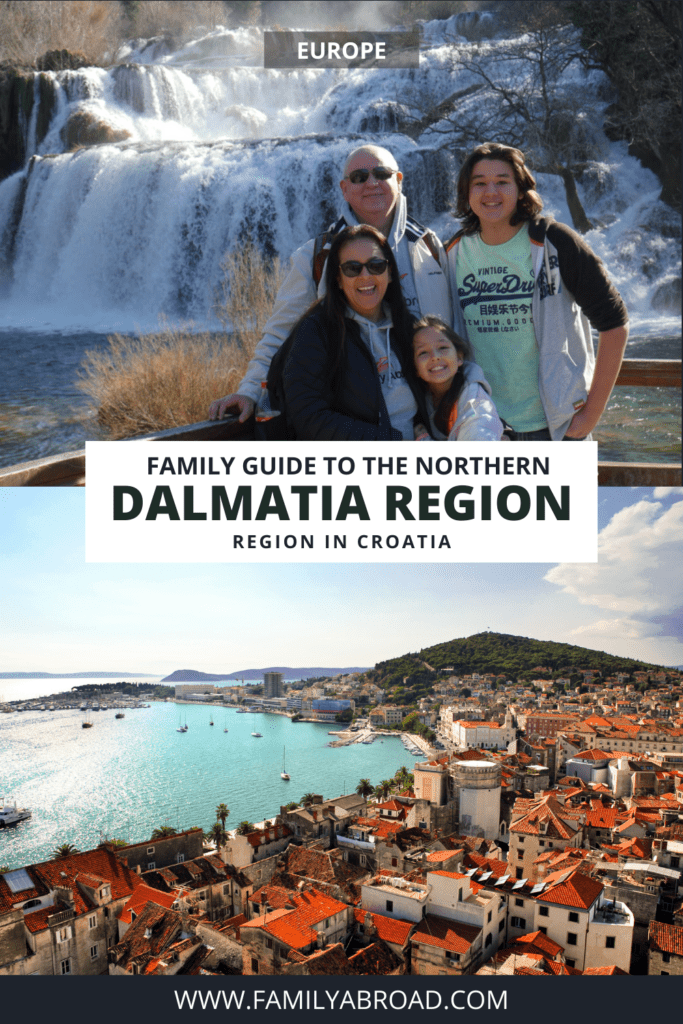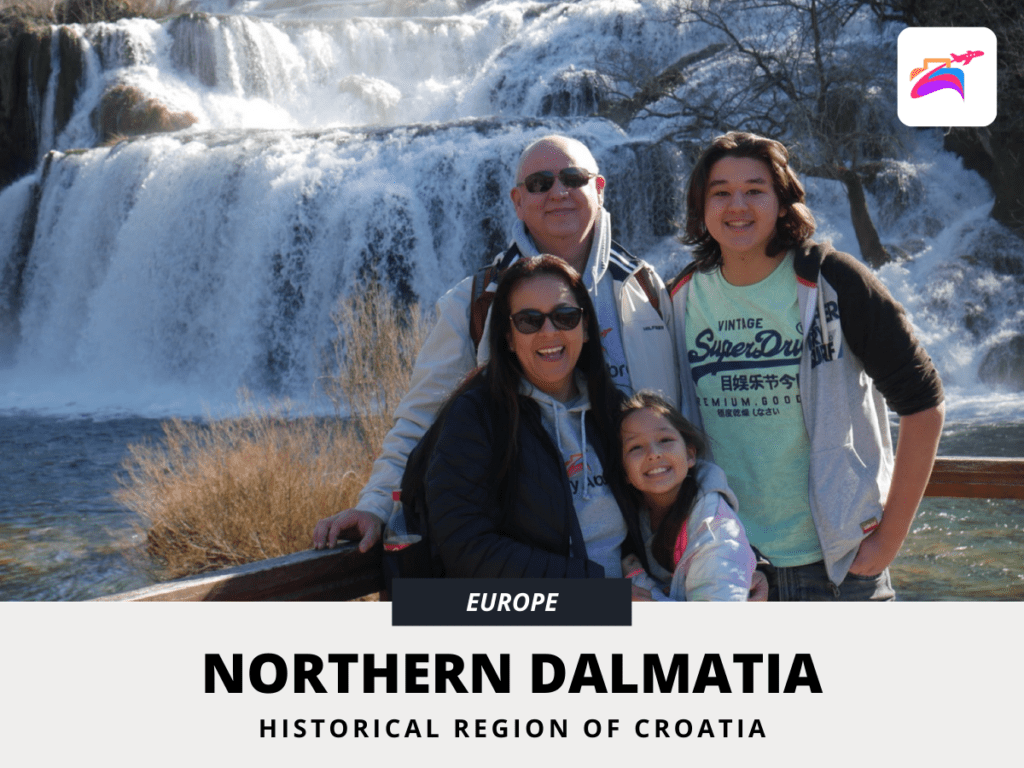Northern Dalamtia Coast, North of Split to Zadar
Introduction
Northern Dalmatia
Overview
History
Things to Do with Family When Traveling the North Coast of Croatia
Staying Along the North Coast of Croatia
Dining with Family Along the North Coast of Croatia
Transportation Along the North Coast of Croatia
Conclusion
Introduction to the Dalmatia Region
Generally speaking, Dalmatia covers the east shore of the Adriatic Sea and, basically runs from the island of Rab all the way to the Bay of Kotor in the South. This includes about 79 islands along the coast and the interior section known as the Dalmatian Hinterland. The largest islands in Dalmatia are Hvar, Brac and Pag and the largest cities in Dalmatia are Split, Zadar and Sibenik.
However, during the Roman times of Dalmatia, the extent of lands considered to be Dalmatia were much larger than the standards of today. In fact, during Roman rule, the lands from Istria down to Albania were all considered to be Dalmatia.
Today, Dalmatia is not so easily defined. I found that Dalmatia was sometimes split up into three different sections: Northern Dalmatia, Central Dalmatia and Southern Dalmatia.
Think of Northern Dalmatia with Zadar as its capital, starting at the Split County/Sibenik County border and extending North to Zadar County.
As for Central Dalmatia, this is a bit easier to define as everything in Split County, Croatia. Split County borders Zadar County to the North, Dubrovnik County to the South, several islands, including the larger islands of Brac, Hvar and Vis and the interior lands up to the Republic of Bosnia and Herzegovina.
Southern Dalmatia would include Dubrovnic County which is between Split County and the country of Montenegro with several major islands and up to the border of the Republic of Bosnia and Herzegovina.
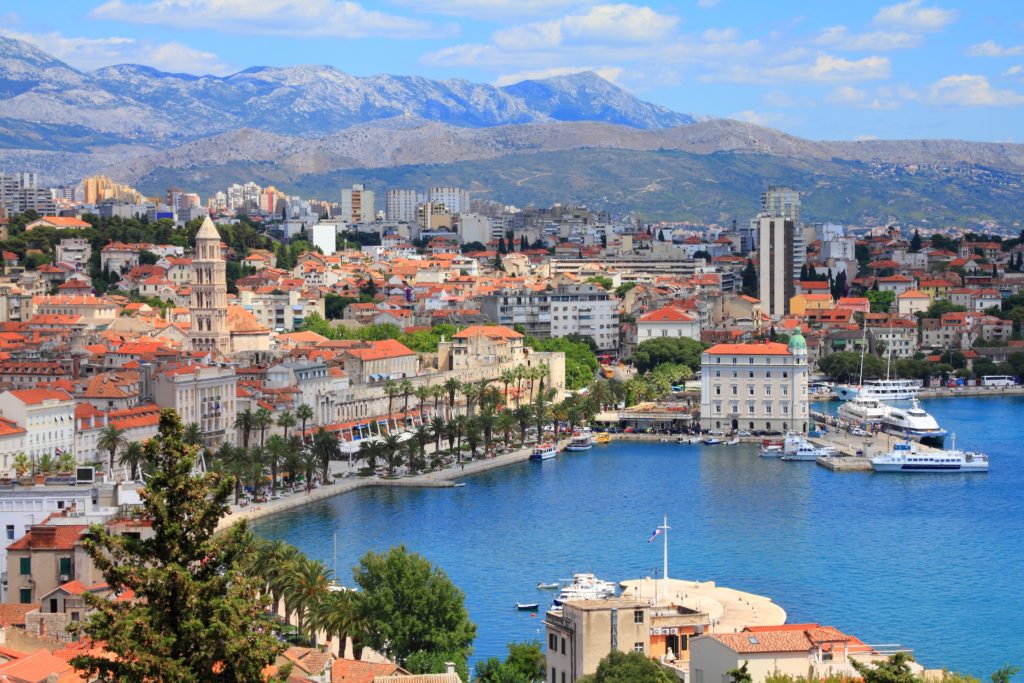
Northern Dalmatia
Traveling along Dalmatia’s coast north of Split to Zadar takes you and your family on a journey of the land and sea. The roads lead to quieter places and smaller towns, giving you a break from the bustle of the larger cities and crowds.
Dalmatia’s coast is a destination to travel slowly, to spend some time off the beaten path, and to admire the villages that make Croatia what it is – a place of tradition, history, and enchantment. Traveling with family upon the roads and mountains of northern Dalmatia leads you to storybook places where a child’s imagination opens to all that they could dream of. And if you love National Parks, this will be a great area to explore for you and the family!
Overview
Croatia is a country where children can live in fantasy lands and the northern coast of Split to Zadar throughout Dalmatia is no exception. Breathtaking waterfalls and walking paths lead you through untouched and pristine nature. With crystal clear waters and fortress walls, children become knights and princesses, sailors and explorers. For children, it seems like the land of fairy tales.
It is amazing to watch children come alive as you travel with family through the northern Dalmatian coast of Croatia. Changing our journey to experience slow travel has allowed us to fully appreciate and learn more about Croatia than any textbook or lesson. And the real lessons are through the people of Croatia and their living history!
History
Dalmatia has a long history from Greek settlements utilizing the Adriatic Sea as a direct link for trade to many years of attempting to defend against roman rule until defeat in 9 AD.
Dalmatia was divided into two parts by the Romans – Lower and Upper Dalmatia. Lower Dalmatia eventually became a part of the Eastern Roman Empire and Upper Dalmatia became a part of the Western Roman Empire.
From the Slavs to the Franks, the regions of Dalmatia were continually pursued, and, at one point, Dalmatia was even sold to Venice. The French and the Austrio-Hungarian countries also occupied this region for a while.
Eventually, Croatia became a part of Yugoslavia, but in 1991, Croatia became its own nation.
Things to Do with Family When Traveling the North Coast of Croatia
Primosten
The seaside village of Primosten is a great stop along the Dalmatian Coast. Relax and cool off by spending some time at their crystal-clear beaches. The colors of blues against the sands and pebbles are serene and tranquil.
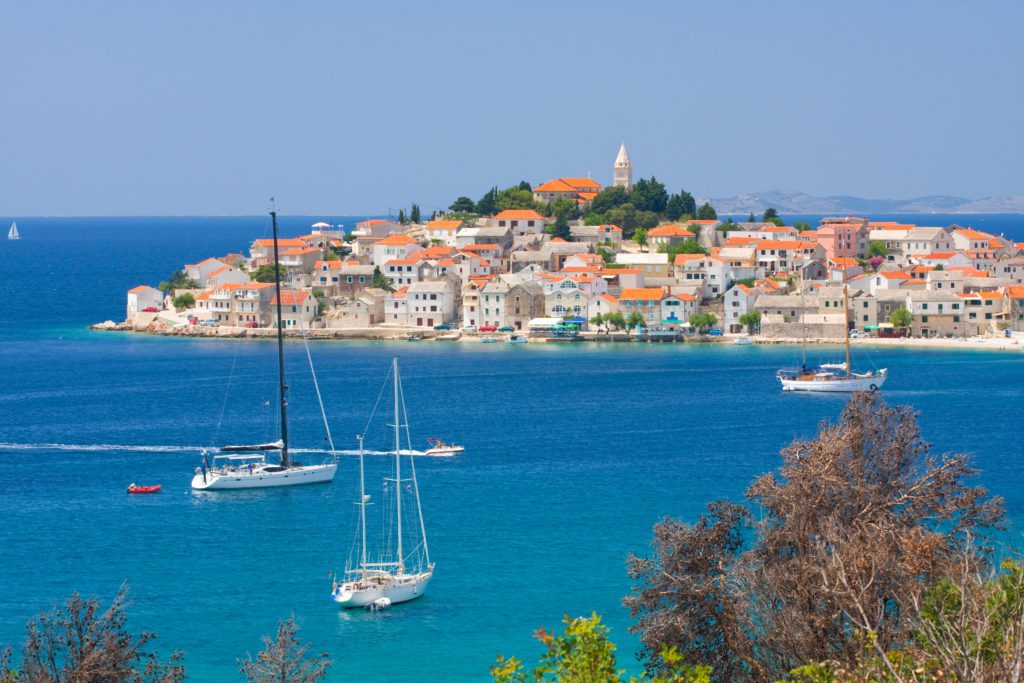
After spending your day at the water, walk through old town and be sure to check out the old town gate which brings you into the romantic town of Primosten.
Sunsets are best seen when visiting Church St. George or if you start your morning through the town visit the market at their picturesque harbor.
FAMILY TIP: Velika Raduca beach is beautiful with its turquoise waters in its calm cove and is one of the longest beaches giving you and the family plenty of space to relax at the stunning beaches of Croatia. Panoramic views of the city, water trampolines for the kids, shade from the forest, umbrellas, loungers, and food available for purchase, it is all you need for the perfect day at the beach with family.
Zadar
Beautiful coastal sunsets and a great base to explore the surrounding countryside (including 2 National Parks) are just a few of the reasons to visit Zadar.
Zadar is well known in history as being one of the few cities in the world that never fell to the invading Ottomans. This is in large measure due to the Venetian defenses and walls that were built in Zadar during the Venetian rule. The sea gate is quite remarkable as it looks like a Roman Triumphal Arch, with the Venetian lion symbol of Venetia proudly placed above the entry.
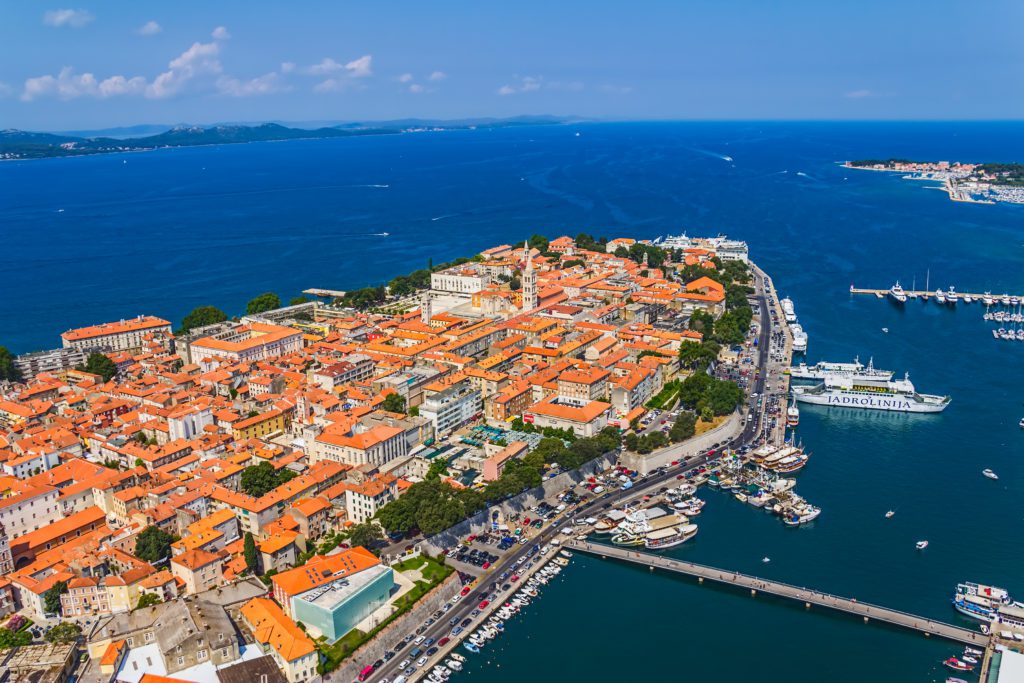
Besides the many architectural wonders from the different ruling eras, the Sea Organ is, perhaps, the favorite family activity. Located near the old town, the Sea Organ actually plays music by the use of the waves from the Adriatic Sea. I can’t say that the music was beautiful as with written music, but the random sounds, mixed with the ocean vibes, did create a relaxing orchestra. And right next door to the Sea Organ is the Greeting to the Sun, which basically stores the sun’s energy during the day and then bursts colored light at night. Saints dedicated to some of the churches in Zadar are written on the sun shaped circle along with astronomical information for each saint. For those readers who grew up watching Alfred Hitchcock movies, I found it interesting to discover that he loved to visit Zadar during the 1960s where he gazed upon the marvelous sunsets!
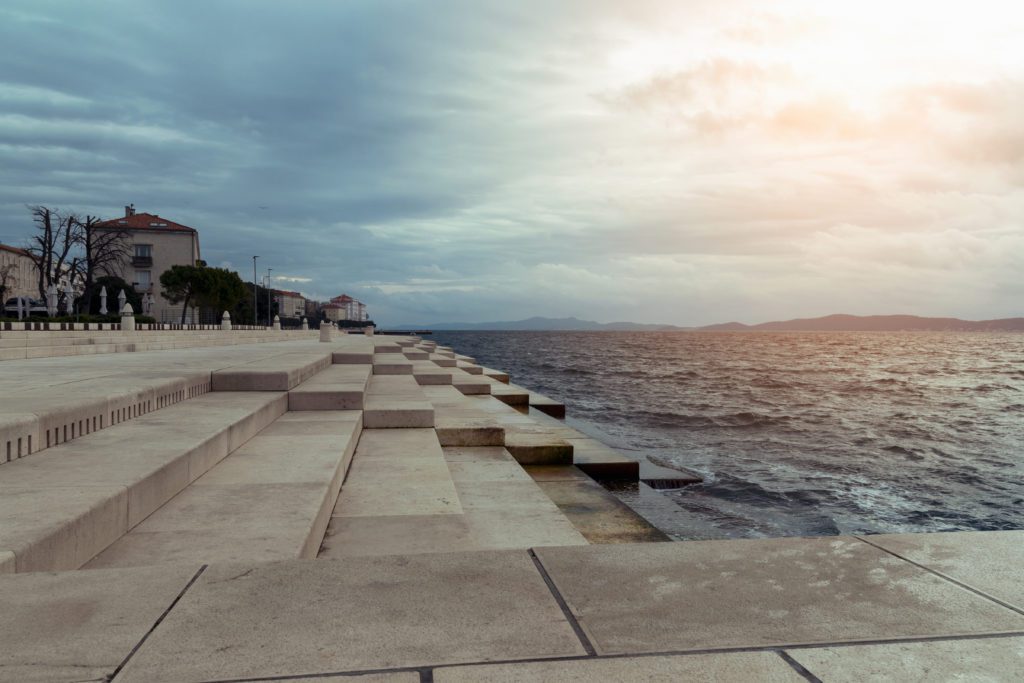
Sibenik
If you want a truly unique town to visit, go to Sibenik. More than 100 years ago, an inventor named Nikolas Tesla harnessed the power of the Krka river to provide electricity to Sibenik – the first city in the world to have electricity. Sibenik is also a rarity in that it contains 2 UNESCO World Heritage Sites – St. James Cathedral and St. Nicholas Fortress.
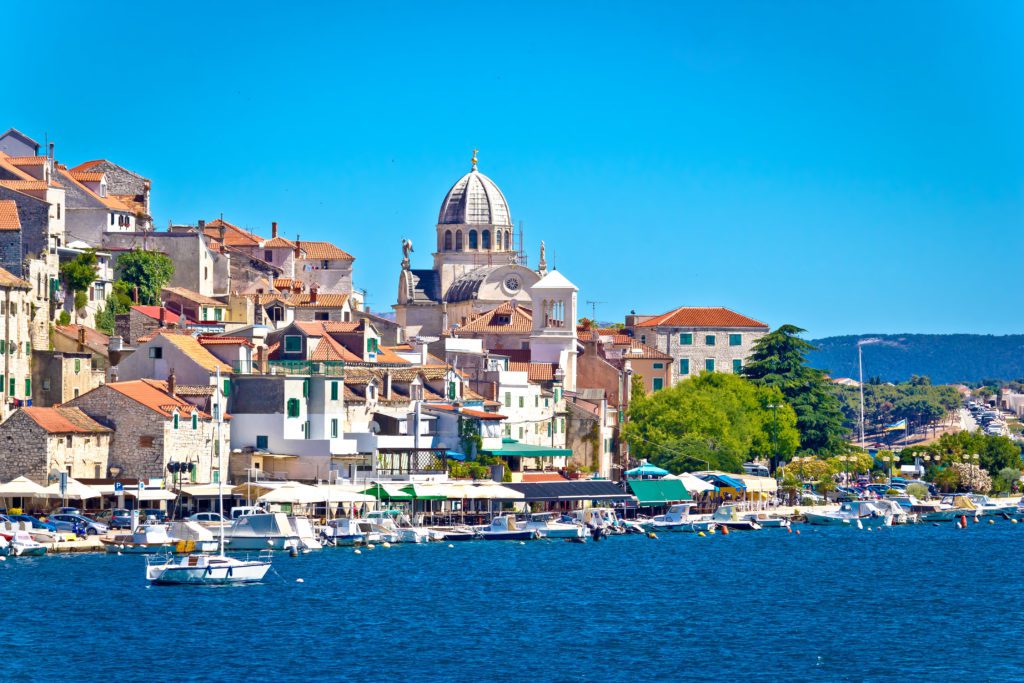
When you visit plan to see at least St. James Cathedral and Fortress St. Michael. The St. James Cathedral was built in both Gothic and Renaissance styles over a period of 105 years. The cathedral was the first to be built using a stone with grooves system, which allowed it to be built without the use of mortar or other ways of binding stone together. Be sure to check out the exterior where “normal” citizens of the town were immortalized when they were featured as stone sculptures. And if you are a Game of Thrones fan, you will be interested to know that the exterior of St. James Cathedral was used in 5 episodes of Season 3 as the “Iron Bank”.
Fortress St. Nicholas is one of 4 fortresses in the city and it is one of the best preserved fortresses in all of Croatia. A narrow walkway connects St. Nicholas Fortress to the mainland and it was built by the Venetians during the 16th century. Apparently, the mere looks of the arrow shaped structure were enough to deter would-be invaders and, even though it was never seriously attacked, it was maintained by the Croatian military until 1979.
Fortress St. Michael is more convenient to visit and is still used today, albeit not as a military defense. Today, it is used for concerts and for a theater. If you happen to be in town during one of the events at St. Michael Fortress, be sure to buy a ticket and attend because it is quite a scenic place. If you had to pick one fortress to visit in Sibenik, this is the fortress that I would suggest visiting.
Finally, it is a great city to use as a base for explorations to the nearby National Parks!
Krka National Park
Set aside a full day to be able to experience all of the beauty within Krka National Park. Located just outside of Šibenik, Krka National Park is well known for its abundance of 7 travertine waterfalls, cascades, gorges, lakes, and islands. And while some call Krka a smaller version of Plitvice Lakes, Krka has its own vibe. We really enjoyed our time at Krka.
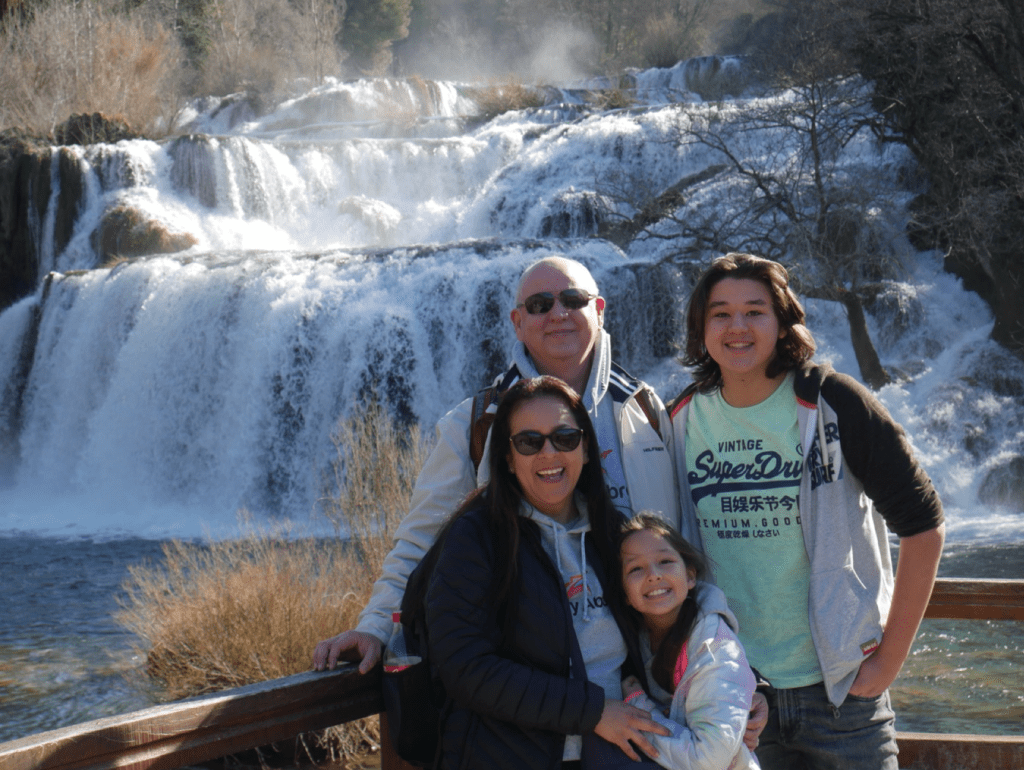
Boardwalks and trails traverse the park, making it easy to walk around the park and even over the water. A 25-minute boat ride takes you along the picturesque Krka River. The park has 5 different entrance points taking you to various locations throughout the extensive Krka National Park. The lower falls are where you are typically able to swim during the summer months. However, you can no longer swim directly under the powerful and pristine waterfalls. There is also a wonderful cave to visit, but be ready for a fairly steep walk up a stair-stepped walkway.
Hours and prices vary depending on the season, so log on to their website to ensure you can make the most of your day while exploring one of Croatia’s National Parks.

FAMILY TIP: Buy your ticket online before you go as lineups can be long, especially during the summer months. This will save you some time and keep the children moving. There are a few cafes and restaurants, however, it is a good idea to pack a picnic and bring some snacks with you to cut down on expenses. We stopped at the Tommys (grocery store) located just a few miles from the park to grab some fresh bread and sandwich meat. It made for a memorable picnic.
Kornati National Park
Welcome to your “nautical paradise” as Kornati National Park is often called. Situated right in the middle between Zadar and Sibenik, Kornati National Park is an archipelago made up of 89 islands, islets, reefs, and cliffs – almost all of which are not inhabited.
Paradise is at its best with no people inhabiting Kornati National Park, just solely those that venture out to experience the breath-taking beauty of its land and sea. It is open all year long, with each season offering a different type of essence.
Paklenica National Park
Found within Croatia’s remarkable Velebit mountain chain, Paklenica National Park is a destination of canyons and hiking. Start your day early to minimize the amount of time you and the family will be outdoors in the heat.
The educational trail takes you through a short journey of history with panels of information to help shed light on your exploration. There are remains of a prehistoric stone wall from the 14th to 16th century and an educational program to learn through nature.
At Paklenica National Park, you are submersed in Croatia’s breathtaking and enchanting nature. Manita Peć cave is only available to see with a guide who will lead you through the stalagmites and stalactites to places like the “Helmet” and the “Witch formations”.

Dining with Family Along the North Coast of Croatia
It should be no surprise that seafood is one of the most popular dishes you will find on the menus along the northern coast of Croatia with its location along the Adriatic Sea. Brudet is a traditional dish passed down from generations that highlights the freshness of the sea with its components of fish and seafood to make the tasty sea stew.
Many dishes are seasoned with rosemary, sage, oil olives and dried meats and cheeses are always on the table as starters. If you are up for something a bit different, try the black risotto with its dark coloring from squid ink. Nathan, our 16-year-old son loved this seafood dish.
Transportation Along the North Coast of Croatia
When traveling along the north coast of Croatia during your family adventure, you will most definitely want to rent a car. Renting a car when discovering Croatia allows you to make all the stops you want, enjoying the perks of slow travel. That is what exploring Croatia and the northern coast of Croatia is all about.
Just be sure that if you are renting a car in Croatia, do it in advance – especially if your family travel finds you in Croatia during the summer months. The peak season is in July and August and you will find yourself paying extremely high prices if you leave it too late.
We rented through Ozone Rent a Car, https://ozone-rent.com/, located directly next to the Split Airport. Ante was a great help and was very attentive to any questions or concerns. You can reach Ante directly by calling +385 92 190 7292.
Conclusion
Croatia has eight National Parks with three of them laying on Dalmatia’s coast, north of Split and up to Zadar. It is an area abundant in tranquil islands. Running alongside the coast of the paradisical Adriatic Sea is a relaxing and memorable journey.
Travel slow and take the time to get to know the northern coast of Croatia and the Dalmatia region to find all its quiet gems and charm. The medieval history and its ruins, the streets, and alleys that take you back in time, you walk through history learning and imagining the days of the past.
WATCH THE FULL VIDEO HERE
Like this post? Pin it on Pinterest!
